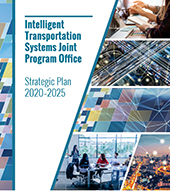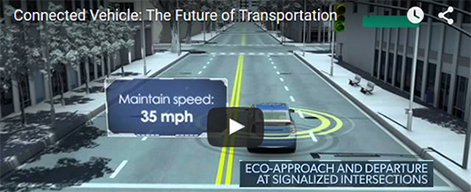About ITS JPO
2010 Report to Congress
United States Department of Transportation
2010 Intelligent Transportation Systems
Program Advisory Committee
Report to Congress
Overview
Section 5305(h) of the Safe, Accountable, Flexible Efficient Transportation Equity Act: A Legacy for Users (SAFETEA-LU, P.L. 109-59) directs the U.S Department of Transportation (Department) to establish an Advisory Committee to provide advice to the Secretary of Transportation on the scope and direction of the Department’s Intelligent Transportation Systems (ITS) Program, by providing input into the development of the ITS aspects of the Department’s strategic plan and reviewing ITS research being considered for funding. The Department also is directed to submit an annual Report to Congress in February of each year which includes:
- All recommendations made by the Advisory Committee during the preceding calendar year;
- An explanation of how the Secretary has implemented those recommendations; and
- The reasons for rejecting the recommendations not implemented.
In response to the SAFETEA-LU requirement, the Department established the ITS Program Advisory Committee (ITS PAC). The ITS PAC has met five times since its inception. The meetings focused on strategic planning activities and program reviews that have been critical to development of the Five-Year ITS Strategic Research Plan for FY 2010 – FY 2014. The first and second meetings in 2007 focused on providing ITS PAC members basic information on the roles and responsibilities of the committee and information on the Department’s initial ITS Program strategic planning efforts and processes. During the ITS PAC’s third and fourth meetings in 2008, the Department solicited the committee’s specific input on the ITS Joint Program Office’s (JPO) proposed future mission, goals, and focus areas. Also, as required under SAFETEA-LU Section 5305(h)(3)(B), the ITS PAC was requested to review proposed ITS research initiatives and provide the following input:
- Whether current research activities are likely to advance either ITS state-of-the-practice or state-of-the-art;
- Whether ITS technologies are likely to be deployed by users, and if not, to determine the barriers to deployment; and
- The appropriate roles for government and the private sector in investing in the research and technologies being considered.
Subsequent to each of the 2008 meetings, the ITS PAC submitted an advice memorandum with several recommendations about the future direction of the ITS research program and related ITS JPO activities. As detailed in the Department’s 2009 Report to Congress, the Department addressed the ITS PAC’s recommendations, integrating them into the ongoing ITS strategic planning process.
ITS PAC Activity in 2009
The ITS PAC made no formal recommendations to the Department in 2009. However, the Committee held its fifth meeting on April 6, 2009, which focused on the ITS PAC’s previous recommendation that the Department consider a new ITS goal on universal access to transportation information that would ensure ITS research addresses the information technology divide in our society. The goal’s focus would be to conduct research on and enable deployment of the means by which all citizens can fully access the mobility and information benefits of the U.S. transportation system.
The ITS PAC restated its concern about social equity and the “digital divide” that many scholars speak of—that with the advent of the Internet and related technologies, disadvantaged populations may have yet another disadvantage, the inability to access information about the transportation system. In addressing whether equity should be a separate ITS research goal or addressed in each of the others, the ITS PAC suggested “matrixing” the goals along two dimensions, with four program goals (safety, mobility, environment, and productivity) and two cross-cutting goals (equity and institutional support), but acknowledged that keeping equity as a separate goal would enhance the goal’s visibility and accountability.
The Department fully supports social equity and universal access through the use of ITS to ensure that all Americans have a full suite of transportation and mobility choices available to them. Rather than incorporating “equity” as a separate, stand-alone goal area; the ITS JPO integrated it into several aspects of the future program. Some examples include:
- The Real-Time Data Capture and Management Program collects and integrates multi-modal vehicle-based data with existing data sources and provides data sets for use by a broad spectrum of public and private sector sources. The collected data may then be used by private service providers and in systems like the 511 traveler information telephone service which is free to all, widely distributed, and available with common technology;
- The ITS Policy Research Program has the capacity to address equity issues that arise from or may be addressed by technology in transportation;
- The Vehicle to Vehicle (V2V) Program is designed to validate the effectiveness of vehicle-based safety applications. The research will be used to inform the National Highway Traffic Safety Administration and its work on motor vehicle safety; and
- The Multi-Modal Integrated Payment Program researches integrated payment technologies across transit (bus, rail, etc.) and roadways, making transit options easier and more convenient for disadvantaged populations who may rely on transit services.
Overall, the ITS technologies included in the Department’s ITS research program allow policy makers to choose socially equitable public options. For example, IntelliDriveSM may create lower-cost commuting and general travel options for economically disadvantaged people.
The Department appreciates the many contributions of the ITS PAC in the ITS strategic planning effort and will seek to continue to leverage the committee’s broad range of experience and expertise in the implementation of the Five-Year ITS Strategic Research Plan.










